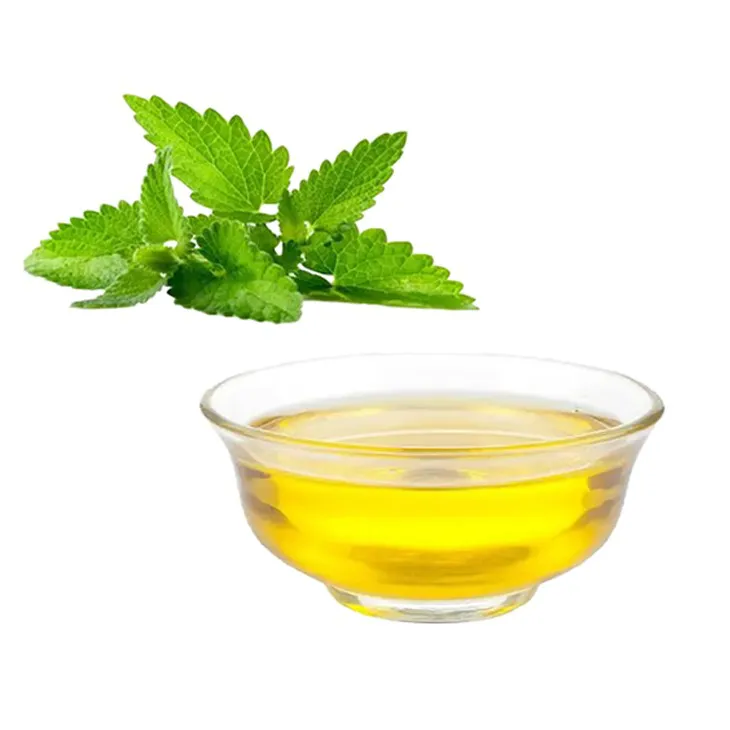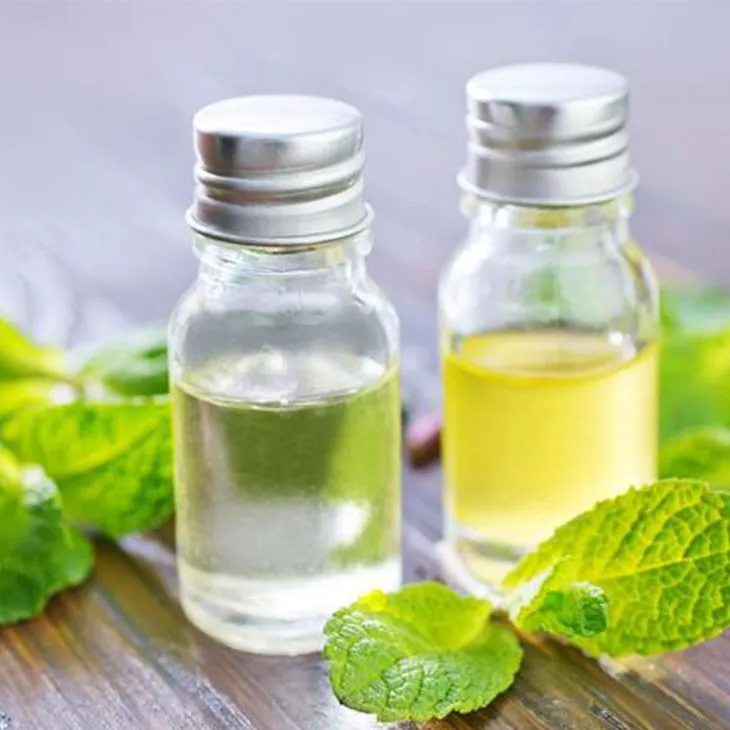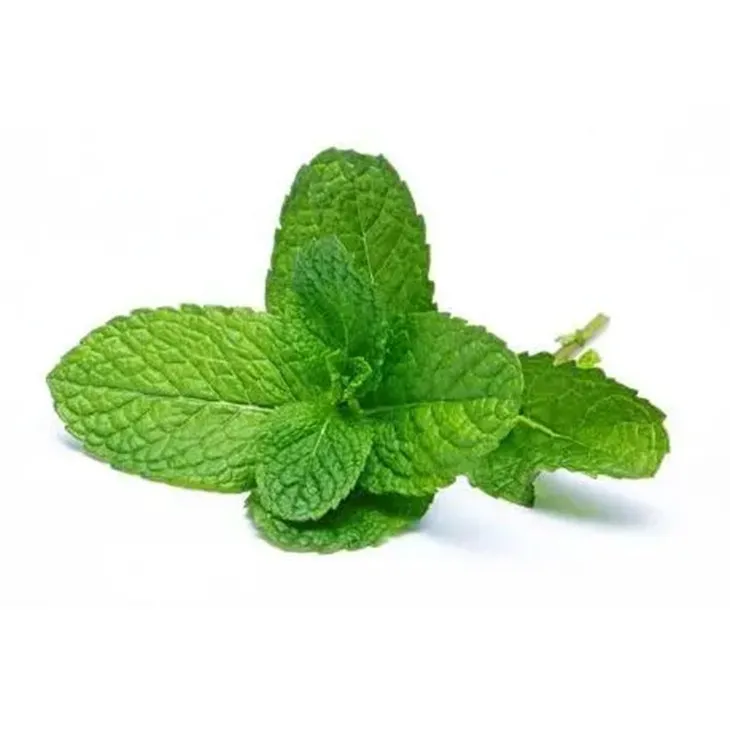- 0086-571-85302990
- sales@greenskybio.com
How to extract peppermint oil from plants?
2024-11-26

1. Introduction
Peppermint Oil has a wide range of applications, from the food and beverage industry for flavoring to the pharmaceutical and cosmetic industries for its therapeutic and aromatic properties. Extracting Peppermint Oil from plants is an interesting process that can be achieved through various methods. In this article, we will explore in detail two of the most common extraction methods: steam distillation and supercritical fluid extraction.

2. Steam Distillation
2.1 Principle
The steam distillation process is based on the fact that the boiling point of a mixture of two immiscible liquids (in this case, water and Peppermint Oil) is lower than the boiling point of either of the individual components. When steam is passed through the peppermint plant material, the volatile components, including the peppermint oil, vaporize along with the steam. The resulting vapor mixture is then condensed, and since water and peppermint oil are immiscible, they can be separated relatively easily.
2.2 Equipment Needed
- A distillation flask: This is where the peppermint plant material and water are placed. It should be made of heat - resistant glass, such as borosilicate glass, to withstand the high temperatures during distillation.
- A condenser: This is used to cool the vapor mixture back into a liquid state. There are different types of condensers, such as the Liebig condenser, which consists of a long glass tube surrounded by a cooling jacket through which cold water circulates.
- A heating source: A Bunsen burner or an electric heating mantle can be used to heat the distillation flask. The heating should be controlled to ensure a steady rate of distillation.
- A separator funnel: Once the condensed liquid is collected, a separator funnel is used to separate the water and the peppermint oil layers. The peppermint oil, being less dense than water, will float on top and can be carefully drained off.
2.3 Procedure
- Harvest fresh peppermint leaves and stems. It is important to choose healthy plants and to harvest at the right time, usually when the plants are in full bloom for maximum oil content.
- Wash the plant material gently to remove any dirt or debris. Then, let it dry partially, but not completely, as some moisture is needed for the distillation process.
- Chop or crush the peppermint plant material into small pieces. This increases the surface area available for the steam to interact with the plant cells and extract the oil more efficiently.
- Place the chopped plant material in the distillation flask and add enough water to cover the plant material. A general ratio is about 1 part plant material to 3 - 5 parts water.
- Connect the distillation flask to the condenser and the heating source. Start heating the flask slowly. As the water heats up, steam will start to form and pass through the plant material, carrying the peppermint oil vapors with it.
- Allow the distillation to continue until a sufficient amount of the condensed liquid is collected in the receiving flask. This may take several hours, depending on the amount of plant material and the efficiency of the setup.
- Transfer the condensed liquid to the separator funnel and let it stand for a while so that the water and peppermint oil layers can separate clearly. Then, carefully drain off the peppermint oil layer into a clean, dry container.
2.4 Advantages and Disadvantages
Advantages:
- It is a relatively simple and inexpensive method, making it accessible for small - scale producers or home - made projects.
- It has been used for a long time and is a well - established technique, so there is a lot of knowledge and experience available.
- The resulting peppermint oil is relatively pure, although it may contain some traces of water and other volatile compounds.
- The process can be time - consuming, especially when dealing with large quantities of plant material.
- There is a risk of overheating the plant material, which can lead to the degradation of some of the volatile components in the peppermint oil.
- The energy consumption can be relatively high, especially if an electric heating source is used continuously for a long time.

3. Supercritical Fluid Extraction
3.1 Principle
Supercritical fluid extraction (SFE) uses a supercritical fluid, most commonly carbon dioxide (CO₂), as the extraction solvent. A supercritical fluid is a substance that is above its critical temperature and critical pressure. At this state, the fluid has properties between those of a gas and a liquid. Supercritical CO₂ has a high diffusivity, low viscosity, and can easily penetrate the plant material to dissolve the peppermint oil. When the pressure is reduced, the CO₂ returns to a gaseous state, leaving behind the extracted peppermint oil with little to no solvent residue.
3.2 Equipment Needed
- A supercritical fluid extraction system: This is a specialized piece of equipment that consists of a high - pressure pump to pressurize the CO₂, an extraction vessel where the peppermint plant material is placed, and a separation vessel where the extracted oil and CO₂ are separated. It also has a temperature and pressure control system to maintain the supercritical state of the CO₂.
- A source of carbon dioxide: High - purity CO₂ gas cylinders are typically used as the source of carbon dioxide.
3.2 Procedure
- Harvest and prepare the peppermint plant material in a similar way as for steam distillation. However, the plant material may need to be dried more thoroughly as any moisture can affect the extraction process in SFE.
- Load the dried peppermint plant material into the extraction vessel of the supercritical fluid extraction system.
- Pressurize the system with carbon dioxide gas until it reaches the supercritical state. The typical pressure for supercritical CO₂ extraction of peppermint oil is around 73 - 80 bar, and the temperature is around 31 - 35 °C.
- Allow the supercritical CO₂ to flow through the plant material for a certain period of time, usually from 30 minutes to several hours, depending on the amount of plant material and the desired extraction efficiency.
- The supercritical CO₂, now containing the dissolved peppermint oil, is then transferred to the separation vessel. Here, the pressure is gradually reduced, causing the CO₂ to return to a gaseous state and the peppermint oil to be collected as a liquid.
3.3 Advantages and Disadvantages
Advantages:
- It is a very clean method as carbon dioxide is a non - toxic, non - flammable, and environmentally friendly solvent. There is very little solvent residue in the final product, which is especially important for applications in the food, pharmaceutical, and cosmetic industries.
- The extraction process can be more selective, allowing for the extraction of specific components of the peppermint oil with better control compared to steam distillation.
- The extraction time can be relatively shorter compared to steam distillation, especially when dealing with large - scale production.
- The equipment for supercritical fluid extraction is very expensive, which makes it less accessible for small - scale producers or home - made projects.
- The process requires a high level of technical expertise to operate the equipment and maintain the correct temperature and pressure conditions.
- Although carbon dioxide is generally considered safe, there are still some safety concerns related to handling high - pressure systems.

4. Comparison between Steam Distillation and Supercritical Fluid Extraction
When comparing steam distillation and supercritical fluid extraction for peppermint oil extraction, several factors need to be considered:
- Purity of the final product: Supercritical fluid extraction generally results in a higher - purity product with less solvent residue, which is beneficial for applications where purity is crucial, such as in the pharmaceutical industry. However, with proper post - treatment, steam - distilled peppermint oil can also meet the required purity standards for many applications.
- Cost: Steam distillation is much more cost - effective, especially for small - scale production or home - made extraction. The equipment for supercritical fluid extraction is expensive to purchase, install, and maintain, which makes it more suitable for large - scale commercial production where the high cost can be offset by the advantages in product quality and production efficiency.
- Complexity and technical requirements: Supercritical fluid extraction is a more complex process that requires specialized equipment and technical knowledge. Steam distillation, on the other hand, is relatively simple and can be carried out with basic laboratory or home - made equipment.
- Production scale: For small - scale production or home - made peppermint oil extraction, steam distillation is the preferred method due to its simplicity and cost - effectiveness. However, for large - scale commercial production, supercritical fluid extraction may be more suitable as it can offer higher production efficiency and better product quality control.

5. Conclusion
In conclusion, both steam distillation and supercritical fluid extraction are viable methods for extracting peppermint oil from plants. The choice between the two methods depends on various factors, such as the scale of production, the required purity of the final product, cost considerations, and technical capabilities. For small - scale or home - made projects, steam distillation is a practical and accessible option, while for large - scale commercial production, supercritical fluid extraction may offer more advantages in terms of product quality and production efficiency. Understanding these extraction methods is essential for anyone interested in the production of peppermint oil, whether for personal use, small - business purposes, or large - scale industrial applications.
FAQ:
What are the main steps in steam distillation to extract peppermint oil?
The main steps in steam distillation for peppermint oil extraction typically include: first, preparing the peppermint plant material by crushing or chopping it to increase the surface area. Then, steam is passed through the plant material. The steam causes the essential oil, in this case peppermint oil, to vaporize. These vapors are then condensed back into a liquid state. The resulting liquid contains the peppermint oil along with water. Finally, the oil is separated from the water, usually through a process like decantation or using a separating funnel.
What are the advantages of supercritical fluid extraction for peppermint oil?
Supercritical fluid extraction for peppermint oil has several advantages. Firstly, it can produce a high - quality peppermint oil with a more complete extraction of the desired compounds compared to some traditional methods. Secondly, it leaves less solvent residue as it often uses carbon dioxide in a supercritical state, which is a relatively clean and easily removable solvent". This results in a purer product. Also, it can be more selective in extracting specific components of the peppermint oil, allowing for better control over the final product quality.
Can peppermint oil extraction be done at home?
Yes, peppermint oil extraction can be done at home on a small scale. For example, a simple steam distillation setup can be created at home using some basic kitchen and household items. However, it is important to note that home - made extraction may not yield a product of the same quality as commercial extraction. Also, safety precautions must be taken as working with heat and potentially flammable substances is involved. Additionally, the quantity of peppermint oil obtained at home will be relatively small.
What factors can affect the quality of peppermint oil during extraction?
Several factors can affect the quality of peppermint oil during extraction. The freshness and quality of the peppermint plant material are crucial. Older or damaged plants may produce lower - quality oil. The extraction method used also plays a role. For example, improper steam distillation parameters such as incorrect temperature or pressure can lead to incomplete extraction or degradation of the oil. In supercritical fluid extraction, factors like the purity of the supercritical fluid (e.g., carbon dioxide) and the extraction time and pressure can impact the quality. Contamination during the extraction process, either from the equipment or external sources, can also reduce the quality of the peppermint oil.
How is the peppermint oil obtained from supercritical fluid extraction purified?
After supercritical fluid extraction, the peppermint oil can be purified in several ways. One common method is by reducing the pressure of the supercritical fluid - oil mixture. As the pressure is reduced, the supercritical carbon dioxide returns to its gaseous state and can be easily removed from the peppermint oil. Additionally, further purification steps such as filtration may be used to remove any remaining impurities or solid particles that might be present in the oil.
Related literature
- "Advances in Peppermint Oil Extraction Techniques"
- "Steam Distillation of Peppermint Oil: A Comprehensive Review"
- "Supercritical Fluid Extraction of Essential Oils: Focus on Peppermint"
- ▶ Hesperidin
- ▶ Citrus Bioflavonoids
- ▶ Plant Extract
- ▶ lycopene
- ▶ Diosmin
- ▶ Grape seed extract
- ▶ Sea buckthorn Juice Powder
- ▶ Fruit Juice Powder
- ▶ Hops Extract
- ▶ Artichoke Extract
- ▶ Mushroom extract
- ▶ Astaxanthin
- ▶ Green Tea Extract
- ▶ Curcumin
- ▶ Horse Chestnut Extract
- ▶ Other Product
- ▶ Boswellia Serrata Extract
- ▶ Resveratrol
- ▶ Marigold Extract
- ▶ Grape Leaf Extract
- ▶ New Product
- ▶ Aminolevulinic acid
- ▶ Cranberry Extract
- ▶ Red Yeast Rice
- ▶ Red Wine Extract
-
Oat Straw Extract Powder
2024-11-26
-
Curcumin Extract
2024-11-26
-
Maca Extract
2024-11-26
-
Uridine-5'-monophosphate Disodium salt
2024-11-26
-
Coix Seed Extract
2024-11-26
-
Chasteberry Extract
2024-11-26
-
Pine bark Extract Powder
2024-11-26
-
Horse Chestnut Extract
2024-11-26
-
Lotus leaf extract
2024-11-26
-
Grape Leaf Extract
2024-11-26





















